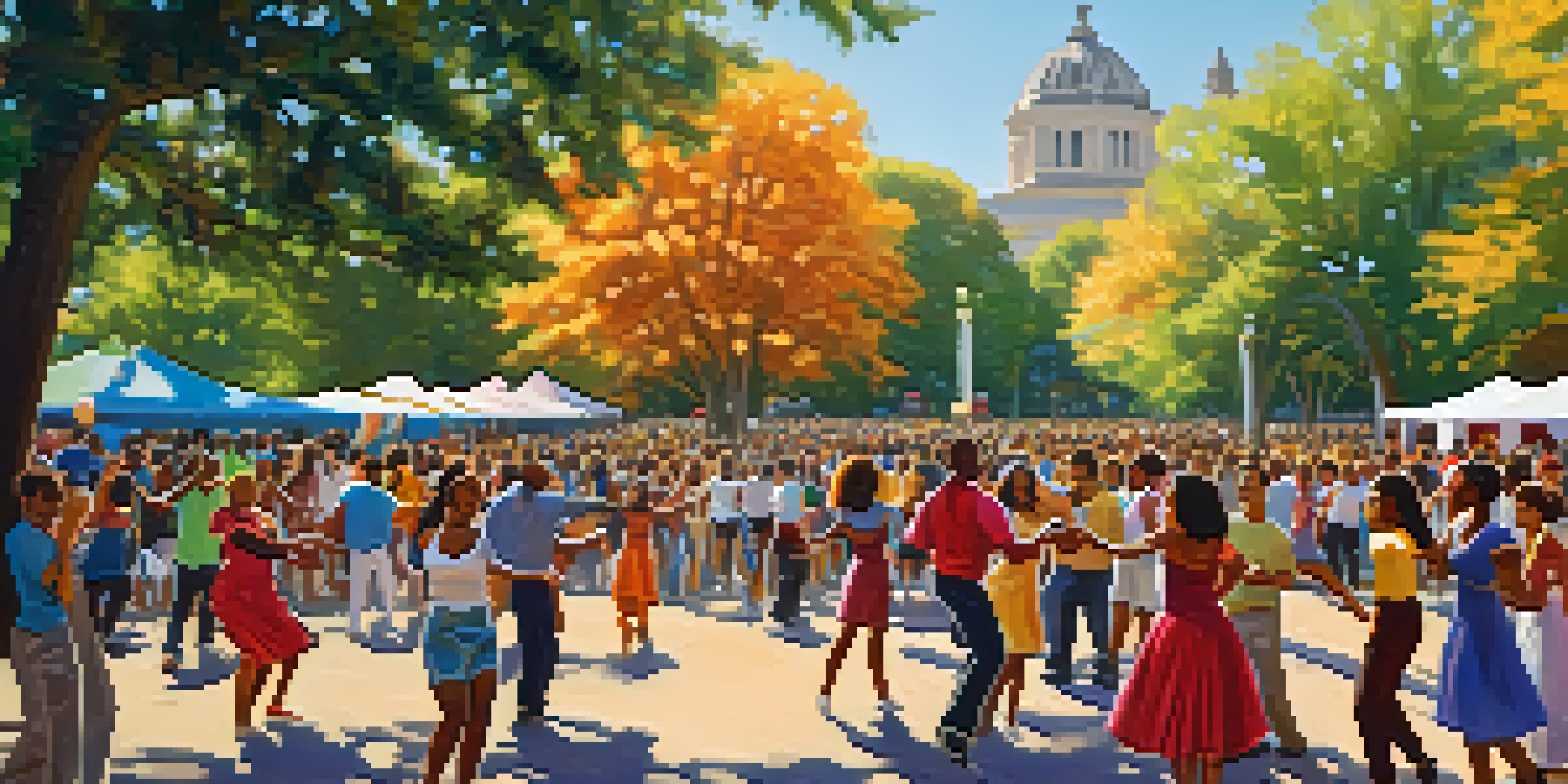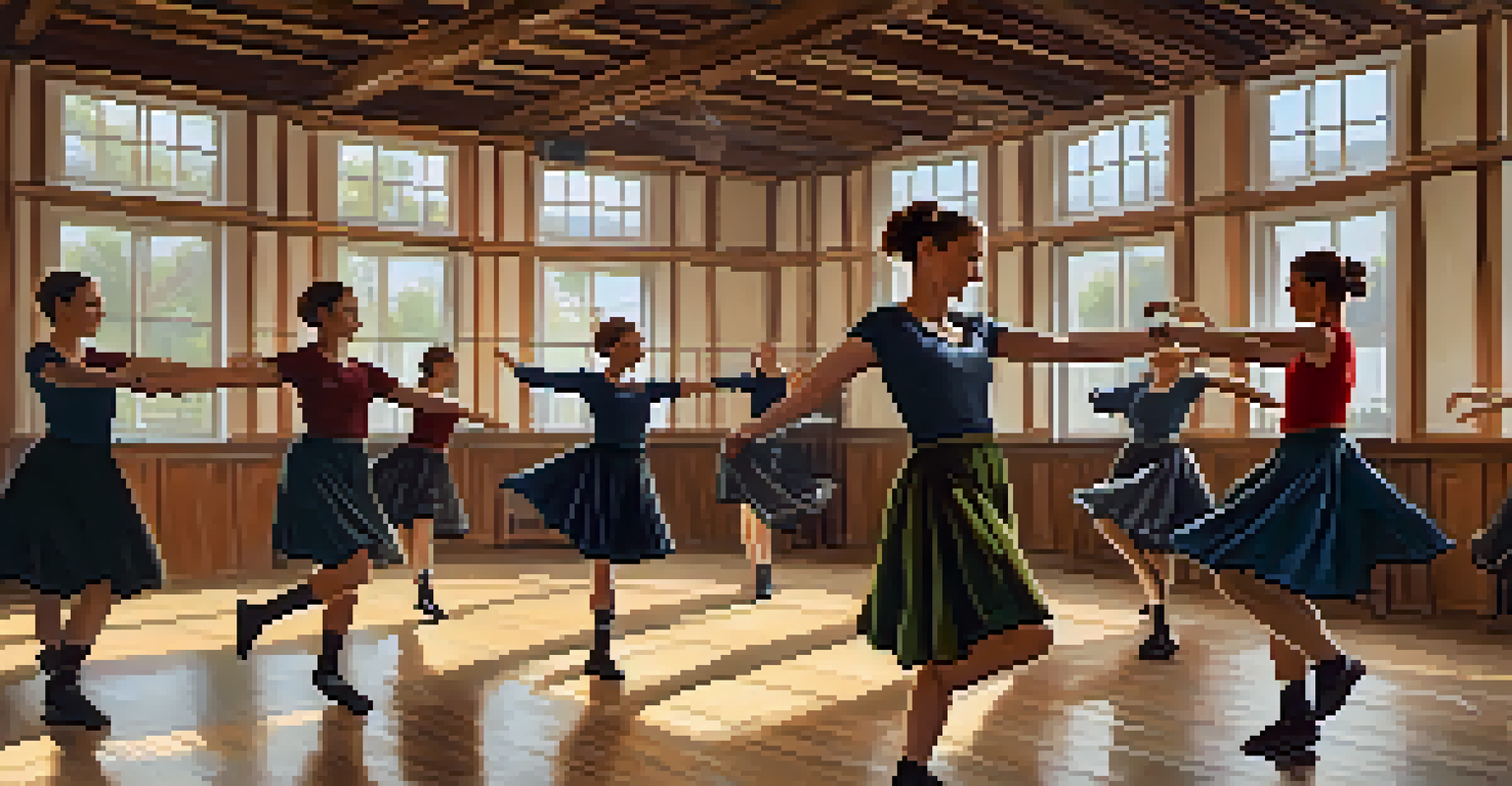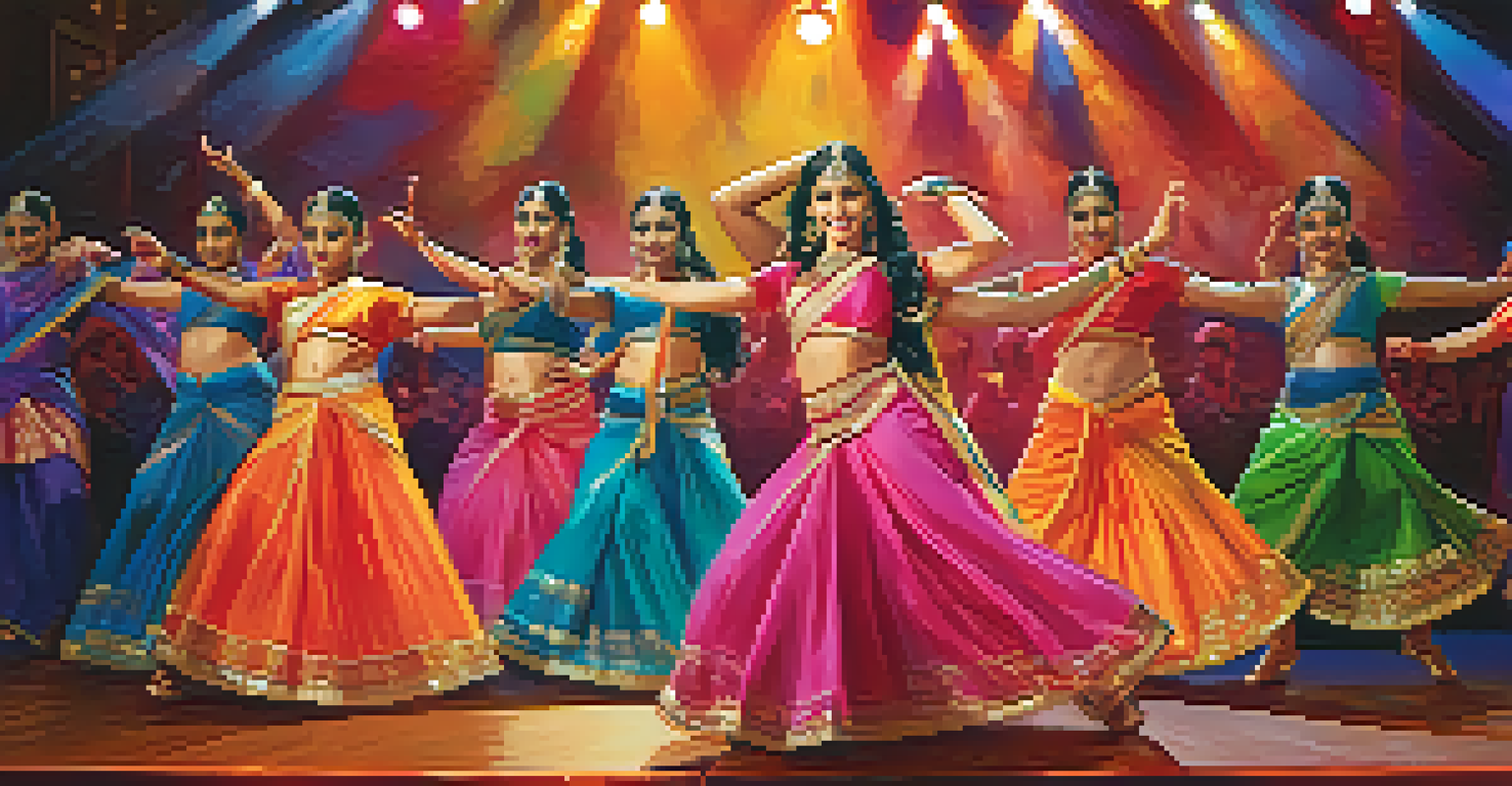Public Dance Events: Building Bridges Between Cultures

The Essence of Public Dance Events
Public dance events serve as vibrant gatherings where individuals come together to celebrate movement and rhythm. These events can range from community salsa nights to grand cultural festivals, inviting participation from people of all backgrounds. They create an inclusive atmosphere where everyone feels welcome to express themselves through dance. Ultimately, they showcase the joy of shared experiences that transcend language barriers.
Dance is the hidden language of the soul.
Through dance, participants not only enjoy the music but also embrace the stories and traditions that come with each movement. This rich tapestry of cultural expression allows for a deeper understanding of one another's heritage. For example, a traditional Indian dance performance might draw viewers from various backgrounds, sparking curiosity and appreciation for its origins. These moments of connection are what make public dance events so powerful.
Moreover, these gatherings often highlight the diversity within a community, showcasing various dance styles like hip-hop, tango, or African tribal dances. Each style tells a story, and together they create a beautiful narrative of unity. As participants engage in these dances, they build bridges across cultures, fostering relationships that might not have otherwise formed.
Fostering Cultural Exchange Through Dance
Cultural exchange is at the heart of public dance events, where people have the opportunity to learn about different customs and traditions. When dancers from various backgrounds share their unique styles, it creates a learning environment that promotes appreciation and respect. For instance, a community dance event might feature a workshop on traditional Scottish Highland dancing, allowing participants to step into a new cultural experience.

These exchanges often lead to collaborations that merge different dance forms, resulting in innovative performances that reflect a blend of cultures. Imagine a vibrant fusion of Bollywood and hip-hop, where dancers seamlessly integrate moves from both styles. This not only entertains but also educates audiences about the beauty of multiculturalism in the arts.
Dance Events Foster Community Bonds
Public dance events create a sense of belonging, allowing individuals from diverse backgrounds to connect and form friendships.
Furthermore, public dance events often serve as a platform for cultural storytelling. Through choreographed performances, dancers can convey their histories and experiences, creating a dialogue that fosters empathy and understanding. This connection through storytelling reinforces the idea that while our backgrounds may differ, our emotions and aspirations often align.
Building Community Through Shared Movement
Public dance events are more than just performances; they are gatherings that strengthen community bonds. When people come together to dance, they share not only the space but also a sense of belonging. This collective experience helps to cultivate friendships and support networks that enrich the community. For many, these events become a regular part of their lives, creating a sense of continuity and connection.
The dance is a poem of which each movement is a word.
As participants engage in dance, they often form friendships that transcend cultural boundaries. The energy and enthusiasm of a shared dance floor break down barriers, allowing individuals to connect on a personal level. For example, a newcomer to a city may find their community through a local dance event, surrounded by others eager to welcome them.
Moreover, these events can serve as catalysts for local initiatives, inspiring participants to collaborate on future projects or performances. As relationships deepen, communities may come together to support local artists, promote cultural education, and celebrate diversity through various forms of expression. This sense of community can ultimately transform a neighborhood into a vibrant hub of cultural exchange.
The Role of Dance in Cultural Preservation
Dance is a vital component of cultural preservation, and public events play a key role in keeping traditions alive. By showcasing traditional dances at community gatherings, we ensure that these art forms continue to thrive in modern society. For many cultures, dance is not just entertainment; it's a way to pass down stories and values from one generation to the next.
Through public dance events, older generations can share their knowledge with younger participants, creating a bridge between the past and the future. For instance, a traditional folk dance might be taught to children during a summer festival, instilling pride and awareness of their heritage. This intergenerational exchange enriches the cultural landscape and encourages appreciation for one's roots.
Cultural Exchange Through Dance
These gatherings promote cultural exchange by allowing participants to learn about and appreciate various dance traditions.
Additionally, these events can spark interest in cultural research and education, prompting attendees to learn more about the origins and significance of the dances they enjoy. As people explore these traditions, they contribute to the preservation of cultural identities, ensuring that they remain vibrant and relevant in an ever-changing world.
Dance as a Tool for Social Change
Public dance events often extend beyond entertainment, serving as platforms for social change and advocacy. Many organizations utilize dance to raise awareness about pressing social issues, from mental health to environmental conservation. By incorporating themes into performances, they can engage audiences in meaningful conversations that inspire action and empathy.
For instance, a dance event focused on climate change might feature choreographed pieces that illustrate the impact of environmental degradation. This not only captivates the audience but also encourages them to reflect on their own relationship with the planet. Dance, in this context, becomes a language of activism, allowing participants to express their concerns and hopes through movement.
Moreover, these events can empower marginalized communities by providing them with a platform to share their stories. By highlighting underrepresented voices through dance, organizers can foster inclusivity and representation in the arts. This not only enriches the cultural narrative but also inspires others to join the movement for social change.
Creating Inclusive Spaces in Public Dance Events
Inclusivity is a crucial aspect of public dance events, ensuring that everyone feels welcome to participate. Organizers often strive to create environments where individuals of all abilities, backgrounds, and ages can come together to dance. This commitment to inclusivity fosters a sense of belonging that resonates beyond the event itself.
To achieve this, many events incorporate adaptive dance programs that cater to individuals with different physical abilities. For example, providing resources like sign language interpreters or accessible dance lessons allows everyone to engage fully. When people see themselves represented and included, it enhances their overall experience and promotes a culture of acceptance.
Inclusivity Enhances Dance Experiences
Creating inclusive spaces in public dance events ensures that everyone feels welcome, enriching the community and the performances.
Furthermore, creating inclusive spaces encourages diverse participation, enriching the dance community as a whole. As more individuals from different walks of life join in, the dance styles and experiences shared become even more varied and vibrant. This diversity not only elevates the quality of the performances but also fosters a deeper understanding and appreciation of different cultures.
The Future of Public Dance Events
As we look to the future, public dance events are poised to evolve in exciting ways. With advancements in technology and communication, these gatherings can reach wider audiences, both in-person and virtually. This opens new avenues for cultural exchange and collaboration, allowing dancers from around the world to connect and share their art.
Moreover, the rise of social media has transformed how dance events are promoted and experienced. Platforms like Instagram and TikTok enable dancers to showcase their talents and engage with audiences in real-time, fostering a global dance community. This interconnectedness not only enhances local events but also inspires dancers to explore new styles and techniques.

Ultimately, the future of public dance events lies in their ability to adapt and innovate while staying true to their roots. As they continue to serve as platforms for cultural exchange, community building, and social change, these events will play a vital role in shaping our collective understanding of diversity and connection through movement.